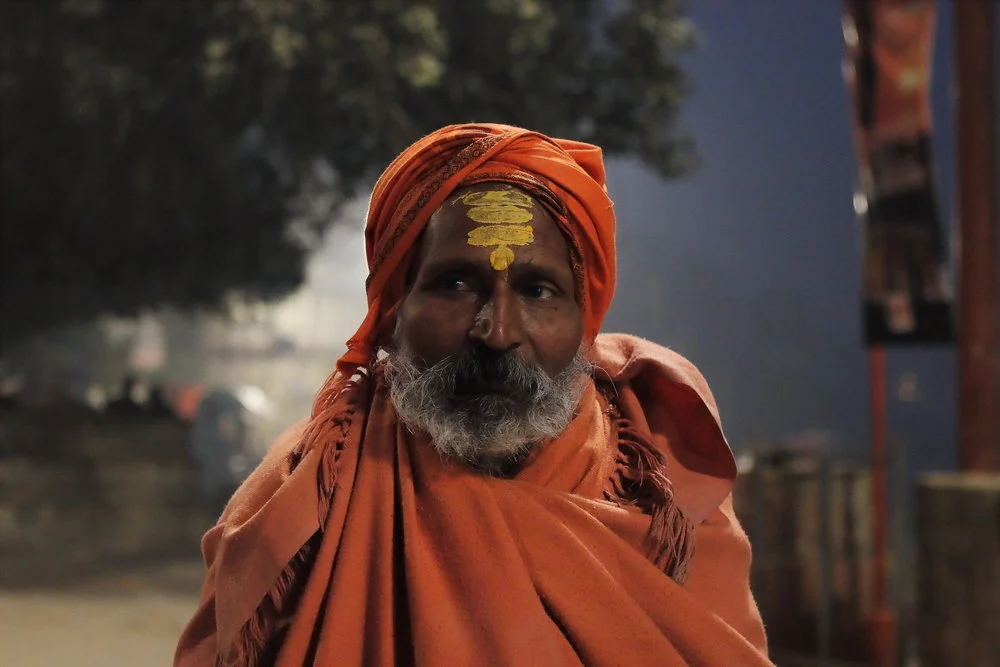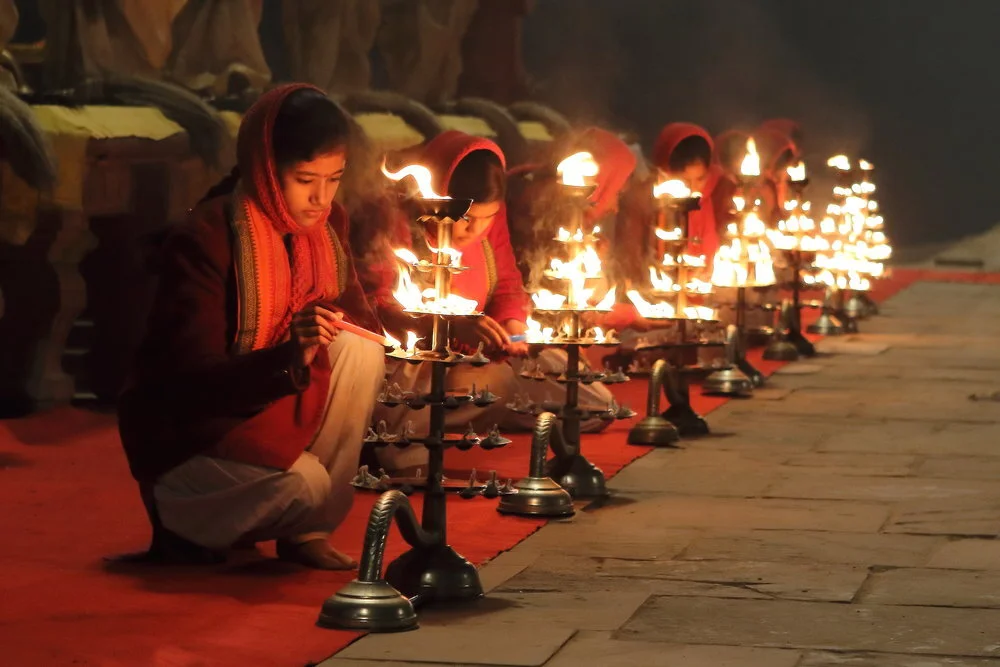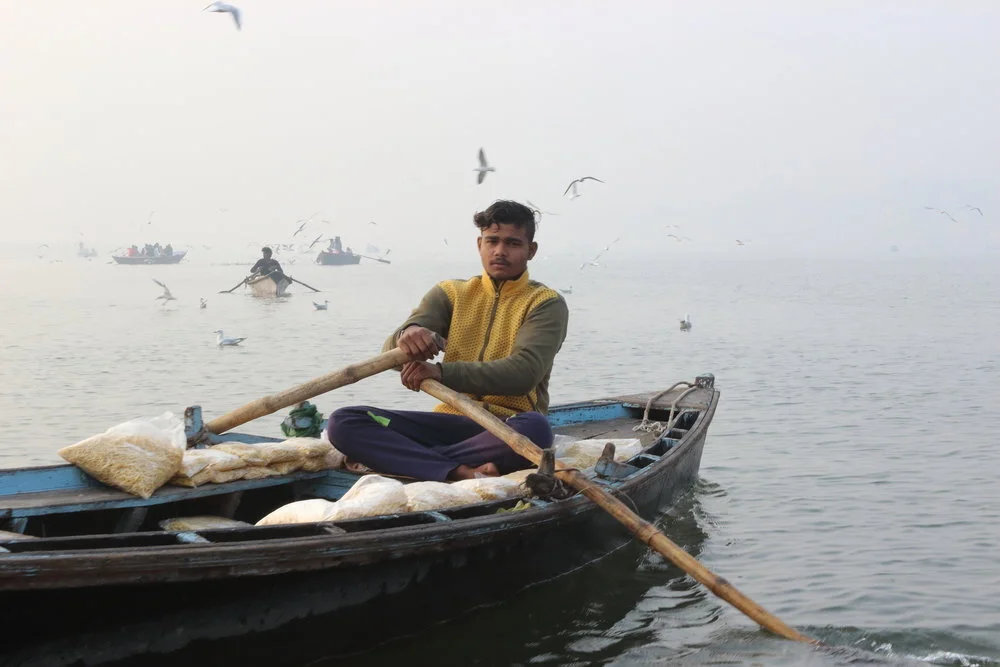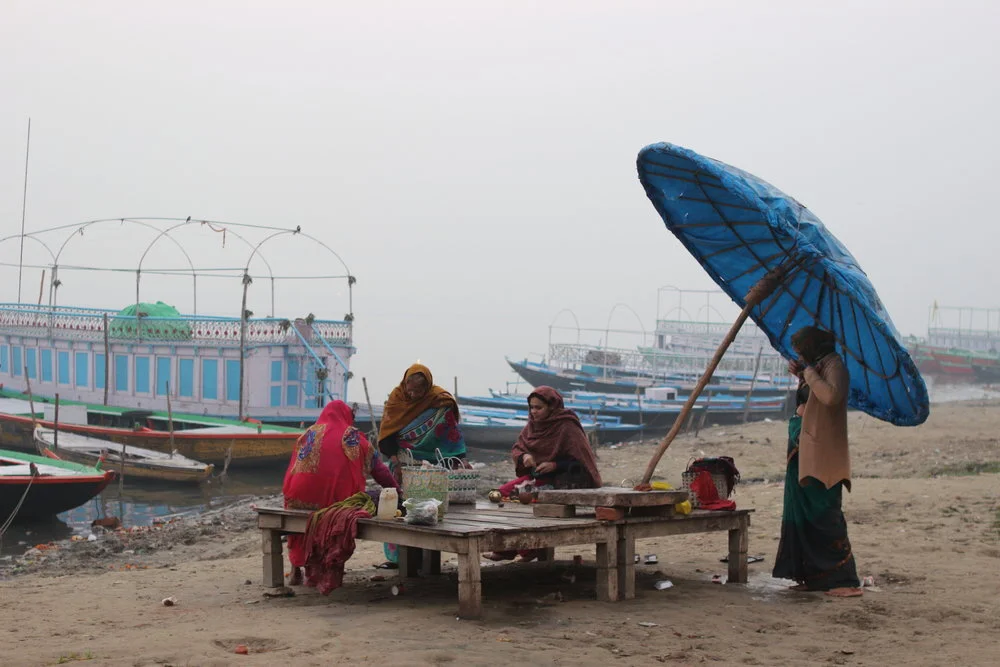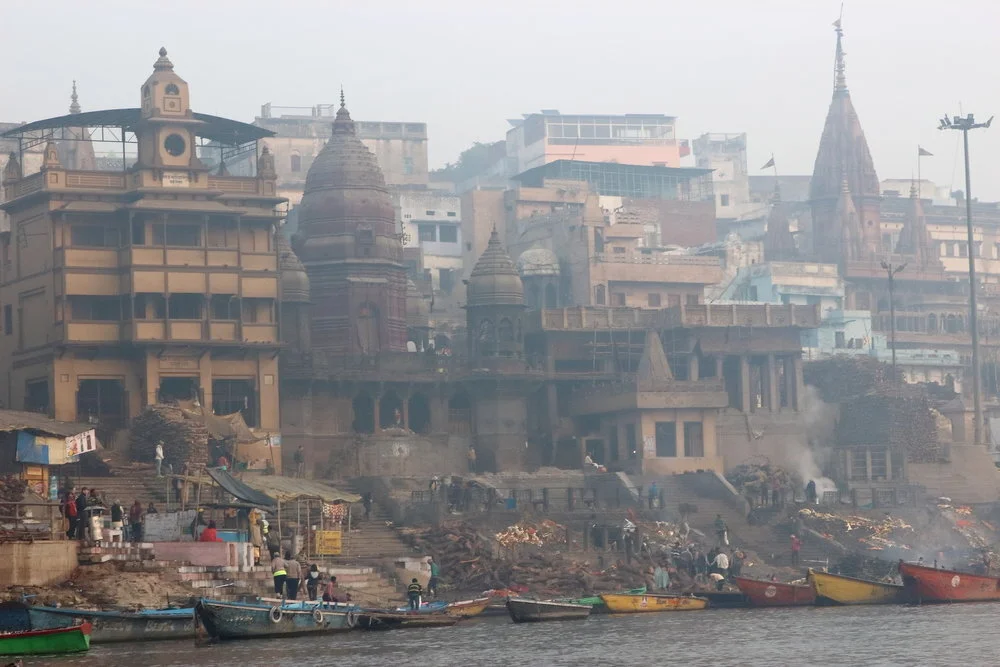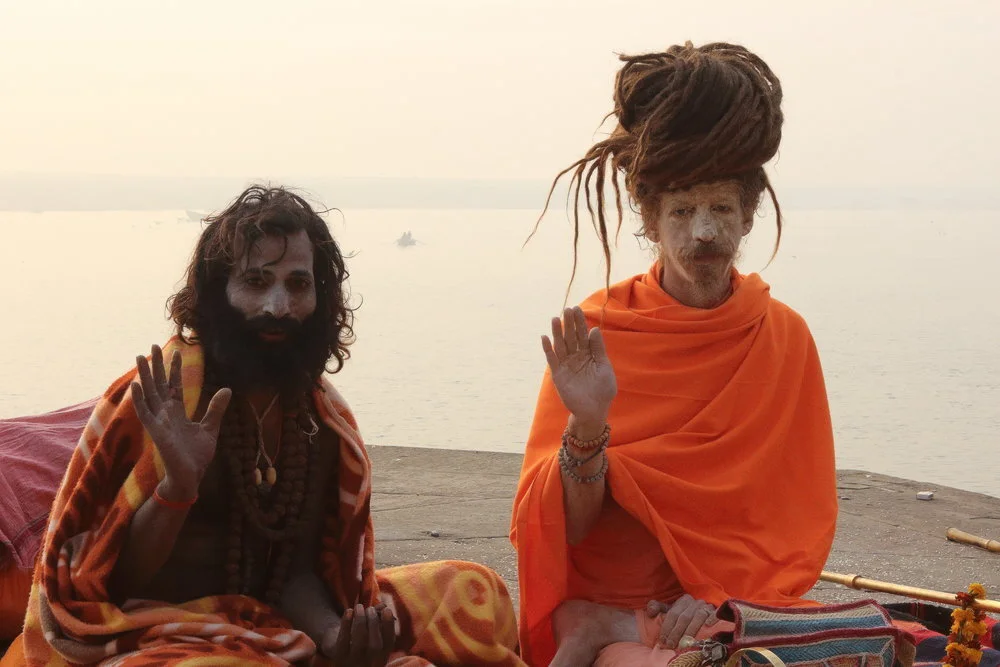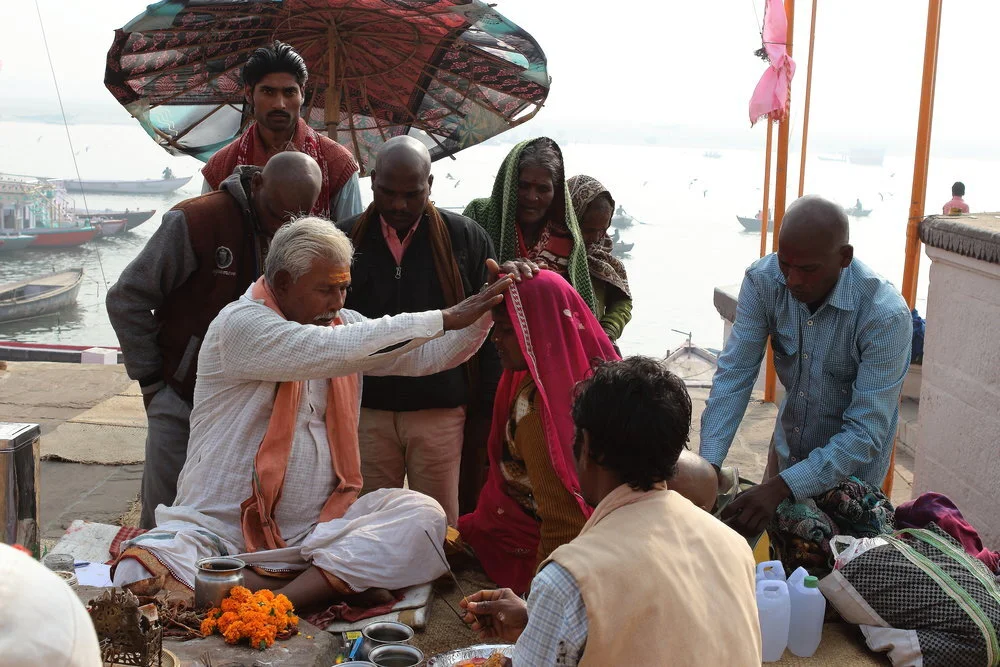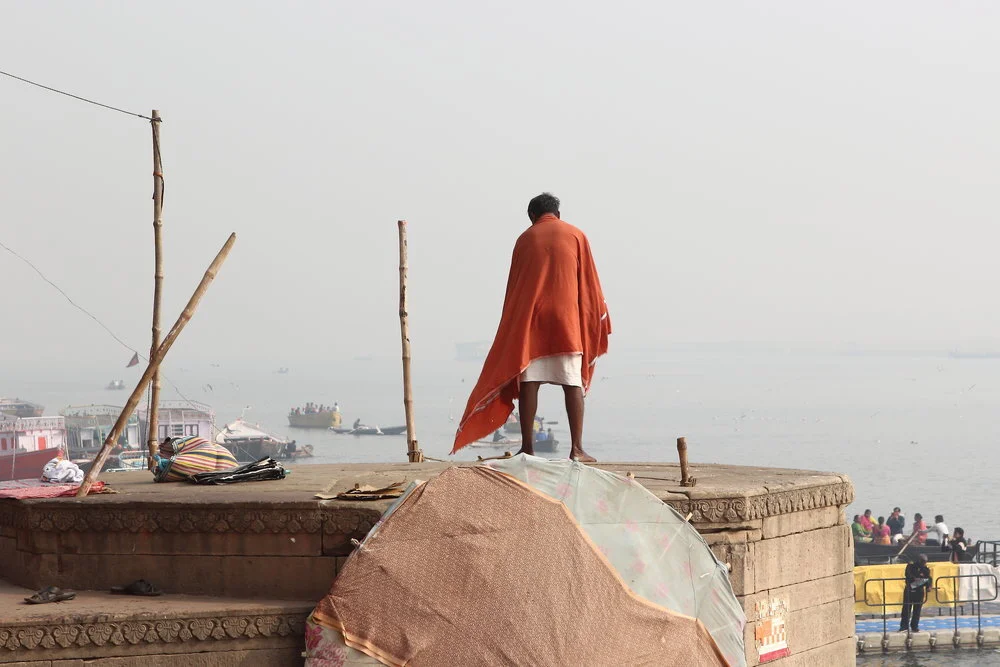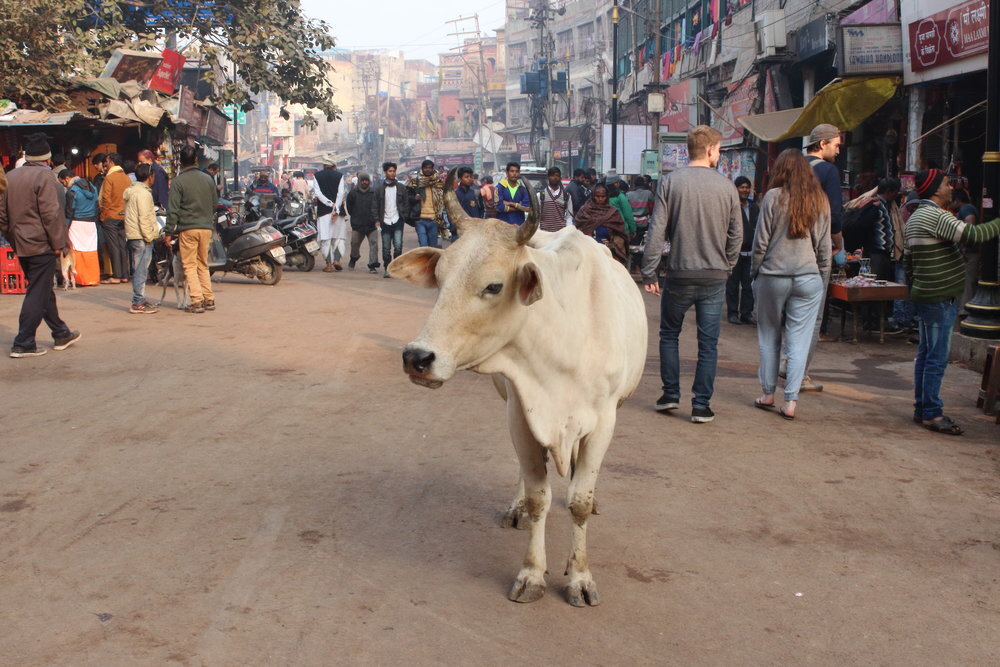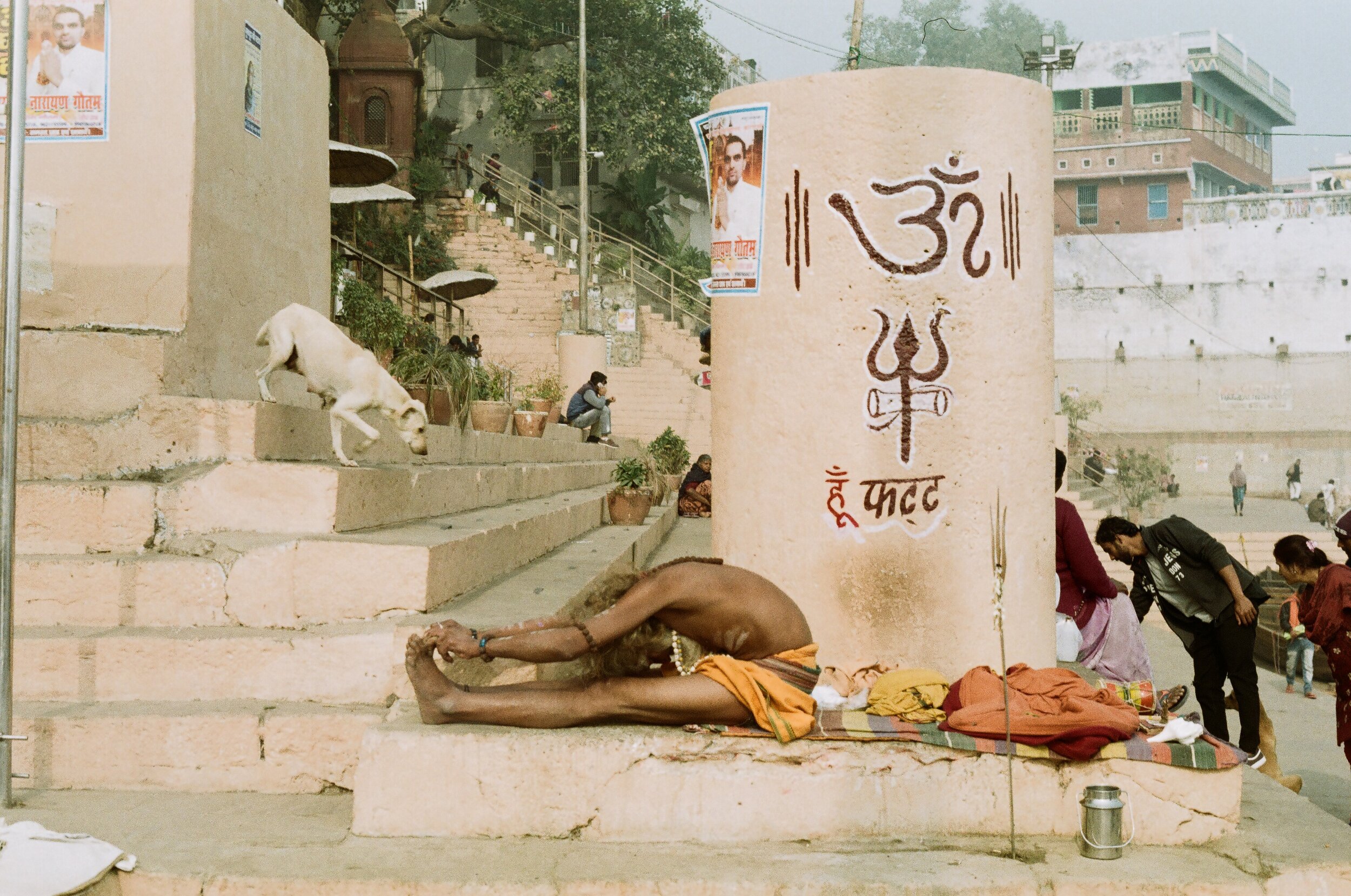Measuring Time in Ancient Varanasi
Varanasi welcomes you with the blend of beauty and chaos found only in India. We made our way to the Hotel Ganges View, fighting a swarm of taxi drivers, and then the usual Indian traffic (immovable cows more menacing than the buses, trucks, and motorbikes combined) only to discover that our reservation was ‘missing’. The concierge double-checked their booking system—a desk-sized ledger of indecipherable scribbles—was our first hint that ‘ancient’ ways remained. Convinced the oversight was ours, he sent us on our way.
We checked into the first vacancy we found as we were eager to set foot on the ghats, a stretch of riverside steps forming the focal point of the city. Varanasi (also known as Benares or Kashi) is a holy city and pilgrimage site embedded on the banks of the sacred Ganges River. Hindu legend claims Lord Shiva created the city in 3,000 BC making it the oldest continuously inhabited city in the world, although archaeological evidence dates its establishment to 1,000 BC. Either way, Mark Twain’s sentiment that “Benares is older than history, older than tradition, older even than legend, and looks twice as old as all of them put together” rings true. Stepping onto any one of Varanasi’s ghats brings a traveler back in time, for these embankments remain dedicated to Hindu ceremonies, ritual baths, and sacred cremations. Ash-painted sadhus cloaked in saffron robes smoke marijuana as they meditate. Sacred gestures and murmurs take place as routinely as a morning cup of coffee, the echo of old traditions reverberating as loudly as ever.
Varanasi is not a common holiday destination, but here we were on a pilgrimage of our own. By 5 am the following morning, we were seven amongst a scarf-bundled crowd facing the morning chill to wake the Mother Ganges. In the daily aarti ceremony, a choir of women chanted and young priests twirled flaming camphor lamps to rouse the Hindu River Goddess from her slumber (she is also tucked into bed every evening with an elaborate adarti ceremony). After, we gathered at the edge of the shore to send candles adrift in paper vessels, the river mirroring the stars.
As the sun rose, hundreds of others gathered at the Ganges for personal rituals. The water lapped at the feet of men crouched low at the river’s edge with bars of soap. Women laid laundry out to on the warm stone steps to dry. Birds circled overhead, eyeing a fisherman’s catch but settling for the bread crumbs thrown by tourists in rowboats. So many lives and livelihoods are intertwined with the Mother River, but many lives also come full circle here. Our boat drifted past a cow’s carcass floating in the milky blue-grey. Ashore, the glowing embers and rising plumes signified several cremations already underway. It was from a distance that we first observed Manikarnika Ghat, the largest of the burning ghats. By evening, we had resolved to take a closer look.
“Burning is learning,” said the self-proclaimed hospice worker who eagerly offered to lead us through Manikarnika Ghat. Night accentuated the atmospheric glow of the embers, the swaying shadows of mourners clustered around pyres, the white smoke of the departed rising high. On this stretch of waterfront, bodies burn continuously, up to twenty at any given time, each taking only two hours. Over 100 cremations take place each day, 365 days a year—all remnants are swept into the river. We were led to the eternal flame that lights these pyres, said to have been burning continuously for a thousand years. A strong sense of reverence surrounds these customs for Hindus believe cremation at the Ganges leads one’s soul to moksha, thus ending the circle of reincarnation. Suddenly, a smiling man in white ceremonial robes approached. In our somber state, his joy hit us rather unexpectedly. He was celebrating; his brother’s soul was on its way to salvation.
We withdrew from the crowd to a rooftop view. The moon shone like a spotlight, allowing us to observe from the shadows. To be cremated on the ghats was a highly public event and though we’d been welcomed, the feeling of voyeurism remained. We were outsiders—neither Indian nor Hindu, and some of us women. Daughters, sisters, and wives are barred from attending the cremations of their loved ones because tears (along with all bodily fluids) are considered ‘impure’. Our vantage point also revealed that even in death, one was still tied to the caste system; the higher the platform, the higher the social status of the departed. The lowest caste had no platform at all, and were instead designated pits dug into the littered riverbank, the black river barely discernible. The darkness of the water served as a reminder of the human matter, the ash and bone, that would be caught in suspension with garbage and faeces, poisoning the Mother Ganges—it dawned on us that she was choking to death, though no one seemed to notice.
The tour of the burning ghat ended with our ‘guide’ taking us into the maze of wood piles behind the temple that fuel these endless cremations. “How much do you wanna buy? Ten kilos? Twenty kilos? A hundred kilos?”. His tone changed as he insisted we provide a hefty cash donation to help the hospice’s impoverished families purchase wood for a proper send off. With the thick and sweetly scented smoke of sandal and banyan wood hanging heavy in the air, we struggled to discern whether a donation would actually help anyone—we certainly had our suspicions. In the end, we offered a small sum to compensate him for the insightful tour (research later that night confirmed that the ‘hospice scam’ was a common one, erasing any lingering guilt). We snaked our way through deserted alleys then emerged into the nightly bustle of the city, the seven of us quiet as we attempted to come to terms with the incredibly raw and powerful experience.
With the rest of the family heading to Delhi on an early morning flight, the two of us were left to wrestle with our conflicting thoughts over breakfast. We were perched on a narrow balcony hanging over the city, amidst the fog that had engulfed Varanasi. Being confronted by a scam the previous evening had ended the experience on a sour note. But rather than dwell in it, we tried to untangle our feelings about death and what could be gleaned from approaching mortality from an Eastern perspective. We also found ourselves trying to understand how something attracting such reverence could be treated so poorly; the Ganges is now one of the most polluted rivers in the world, and though the partially cremated remains are certainly the most visceral source of its pollutants, they are not the worst. Every day, billions of litres of untreated sewage, industrial chemicals, and tonnes of plastic pour into the Ganges from the countless cities and villages that line its banks, rendering the water of India’s main artery utterly unsafe (by any scientific measure) for bathing, let alone drinking (as is quite common). Yet we’d seen the throngs that flock to the ghats to immerse themselves in the ‘purifying’ waters. It is clear that cleaning up the Ganges will require a monumental effort from the government, industry, the locals who depend on it, and the pilgrims who travel from every corner of the vast country to worship it. But, we both agreed that something must be done to preserve the ecological health and, as an increasing number of activists and holy men argue, the spiritual integrity of the river.
Below us, life carried on as usual. Children played, cows meandered, wallahs shivered under their woollen sweaters in the ‘cold snap’ of 12 degree weather. Curious to see what everyday life in Varanasi was like away from the ghats, we wandered through a dense network of narrow alleys, past ancient doorways, weathered buildings and homes—their once vibrant colours faded by time to charming pastels of yellow, peach, mint green and light blue. It was a quiet morning, and away from the eyes of tourists, locals went about their daily routines. We heard the clang of metal spatulas on skillets as women fried up breakfast parathas (a North Indian flatbread). Freshly washed and brightly coloured saris were hung up to dry, clay cups of milky chai were doled out at every corner, and curious kids posed for pictures—one clutching his goat proudly. Another saffron-clad sadhu passed us, this one seemingly late for his own morning rituals. Wandering aimlessly, we sampled chai from several wallahs, devoured a spicy masala dosa from an alley vendor, and chatted with kids eager to practice their english.
A few hours later, we re-emerged on the ghats. An impromptu game of cricket was underway, the pack of hollering kids chasing a tennis ball as it bounced from one stone wall to another. Not far behind the wicket was the invisible border to Harishchandra, the smaller cremation ghat. A ceremony was just beginning. The waist-height pyre had been built around the body, its face visibly exposed, the man looking skyward peacefully. His son, robed in white and head shaved per tradition, circled the pyre with a fistful of smouldering palm fronds, his bare feet walking five full circles before kneeling by his father’s head and setting him aflame. Ash by ash, the man began rising to the heavens. We absorbed it all in silence. Conflicted feelings aside, it was undeniable: there was something peaceful and deeply moving about the ritual.
Our time in Varanasi had dwindled down to its last couple hours. We sat on the steps beside the leaning Ratneshwar Mahadev temple, the ghats and Ganges fading into the smoky horizon behind it, and soaked up the bustling scene—a blend of the mundane and the mystical. A young local struck up a conversation with us and before long, he was telling us about his life in Varanasi over small cups of chai. He believed that while some traditions would never change (his mom bathes in the Ganges every morning) others were eroding (like his disillusionment with the idea of arranged marriage). His warmth, hospitality, and hole-in the-wall lunch spot recommendation ended our experience on a brighter note, and it was with two bellies full of delicious thali that we bid Varanasi farewell.
It took some time for us to unravel our thoughts on Varanasi. The city is dichotomous: reverential prayer to an increasingly polluted river, still regarded as a deity; ancient rituals conducted in front of pilgrims taking selfies; vibrant life unfolding a cricket ball’s throw away from cremation ceremonies; an aura of spirituality constantly interrupted by relentless touts pushing trinkets, boat rides, and unsolicited massages. And yet combined, all these contradictions make a visit to Varanasi so utterly compelling. While much of it felt far from ‘authentic’, a symptom of any place where tourism has taken hold, certain moments—the vegetable wallah pulling his blue handcart through cobbled alleys, barefoot pilgrims with mala beads and incense offerings for their Mother Ganges, the sinking sun casting an orange hue over the architectural jumble of empires past—offered a portal to a time and spirit that, elsewhere, is long gone.

